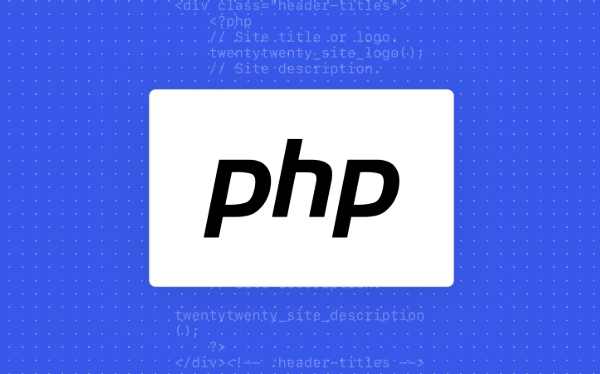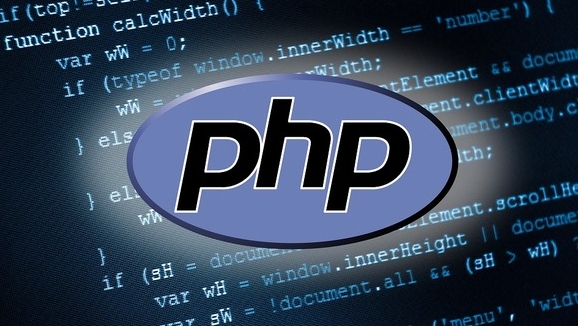When PHP resolves a function name with a namespace, it is preferred to look up the functions in the current namespace, and then determines the call target based on whether it is a relative path or a fully qualified path. The specific rules are as follows: 1. Unqualified function names (such as hello()) are only searched in the current namespace; 2. Relatively qualified names (such as Sub\hello()) are resolved based on the current namespace; 3. Fully qualified names (such as \hello()) are searched from the global namespace; 4. Functions are not within the automatic loading range and need to be introduced manually; 5. Function alias can be set through the use keyword to simplify calls; 6. Global functions may be overwritten by the namespace function of the same name, and the global function needs to be called explicitly using a backslash. Understanding these rules helps avoid call errors.

When PHP resolves function names with namespaces, it follows a set of rules that determine which function gets called based on the current namespace and how the function name is referenced. The key idea is that namespace resolution depends heavily on whether the function call uses a fully qualified name, a relative name, or an unqualified name.

Unqualified function calls look in the current namespace
If you call a function without any namespace separator (like \ ), PHP assumes you're referring to a function in the current namespace.

For example:
namespace MyProject;
function hello() {
echo "Hello from MyProject";
}
hello(); // Outputs: Hello from MyProject Here, hello() is unqualified, so PHP looks for it inside MyProject . It does not check the global space unless told otherwise.

Qualified names resolve based on the current namespace unless prefixed with a backslash
A qualified name includes part of a namespace but not the full path — like Sub\hello() .
PHP resolves this relative to the current namespace:
namespace MyProject;
function hello() {
echo "Top-level hello";
}
namespace MyProject\Sub;
function hello() {
echo "Sub hello";
}
MyProject\Sub\hello(); // Sub hello But if you try calling just hello() in the MyProject\Sub namespace, it will look in MyProject\Sub first. If it doesn't find it there, it won't automatically go up to MyProject .
Fully qualified names start with a backslash and use the global namespace
To bypass the current namespace and refer directly to a global or specific namespaced function, you must use a fully qualified name — one that starts with a backslash ( \ ):
namespace MyProject;
function hello() {
echo "From MyProject";
}
\hello(); // Calls global function 'hello', if exists If there's no global hello() , this will throw an error. So be careful when using fully qualified names — make sure the function actually exists at that path.
Things to watch out for
- Autoloading only applies to classes , not functions. So if your function is in another file, you need to manually include it.
- Function aliasing can help manage complex references:
use function MyProject\Helpers\format as formatData;
This lets you call
formatData()instead of typing the full path every time. - Global functions can be shadowed by namespaced ones unless explicitly referenced with
\. - Current namespace (unqualified)
- Relative paths (qualified)
- Global or exact namespace (fully qualified)
So, PHP resolves function names with namespaces by checking:
It's straightforward once you understand the context, but easy to trip over if you're not paying attention to how the name is written.
Basically that's it.
The above is the detailed content of How does PHP resolve function names with namespaces?. For more information, please follow other related articles on the PHP Chinese website!

Hot AI Tools

Undress AI Tool
Undress images for free

Undresser.AI Undress
AI-powered app for creating realistic nude photos

AI Clothes Remover
Online AI tool for removing clothes from photos.

Clothoff.io
AI clothes remover

Video Face Swap
Swap faces in any video effortlessly with our completely free AI face swap tool!

Hot Article

Hot Tools

Notepad++7.3.1
Easy-to-use and free code editor

SublimeText3 Chinese version
Chinese version, very easy to use

Zend Studio 13.0.1
Powerful PHP integrated development environment

Dreamweaver CS6
Visual web development tools

SublimeText3 Mac version
God-level code editing software (SublimeText3)

Hot Topics
 How do I implement authentication and authorization in PHP?
Jun 20, 2025 am 01:03 AM
How do I implement authentication and authorization in PHP?
Jun 20, 2025 am 01:03 AM
TosecurelyhandleauthenticationandauthorizationinPHP,followthesesteps:1.Alwayshashpasswordswithpassword_hash()andverifyusingpassword_verify(),usepreparedstatementstopreventSQLinjection,andstoreuserdatain$_SESSIONafterlogin.2.Implementrole-basedaccessc
 How can you handle file uploads securely in PHP?
Jun 19, 2025 am 01:05 AM
How can you handle file uploads securely in PHP?
Jun 19, 2025 am 01:05 AM
To safely handle file uploads in PHP, the core is to verify file types, rename files, and restrict permissions. 1. Use finfo_file() to check the real MIME type, and only specific types such as image/jpeg are allowed; 2. Use uniqid() to generate random file names and store them in non-Web root directory; 3. Limit file size through php.ini and HTML forms, and set directory permissions to 0755; 4. Use ClamAV to scan malware to enhance security. These steps effectively prevent security vulnerabilities and ensure that the file upload process is safe and reliable.
 What are the differences between == (loose comparison) and === (strict comparison) in PHP?
Jun 19, 2025 am 01:07 AM
What are the differences between == (loose comparison) and === (strict comparison) in PHP?
Jun 19, 2025 am 01:07 AM
In PHP, the main difference between == and == is the strictness of type checking. ==Type conversion will be performed before comparison, for example, 5=="5" returns true, and ===Request that the value and type are the same before true will be returned, for example, 5==="5" returns false. In usage scenarios, === is more secure and should be used first, and == is only used when type conversion is required.
 How do I perform arithmetic operations in PHP ( , -, *, /, %)?
Jun 19, 2025 pm 05:13 PM
How do I perform arithmetic operations in PHP ( , -, *, /, %)?
Jun 19, 2025 pm 05:13 PM
The methods of using basic mathematical operations in PHP are as follows: 1. Addition signs support integers and floating-point numbers, and can also be used for variables. String numbers will be automatically converted but not recommended to dependencies; 2. Subtraction signs use - signs, variables are the same, and type conversion is also applicable; 3. Multiplication signs use * signs, which are suitable for numbers and similar strings; 4. Division uses / signs, which need to avoid dividing by zero, and note that the result may be floating-point numbers; 5. Taking the modulus signs can be used to judge odd and even numbers, and when processing negative numbers, the remainder signs are consistent with the dividend. The key to using these operators correctly is to ensure that the data types are clear and the boundary situation is handled well.
 How can you interact with NoSQL databases (e.g., MongoDB, Redis) from PHP?
Jun 19, 2025 am 01:07 AM
How can you interact with NoSQL databases (e.g., MongoDB, Redis) from PHP?
Jun 19, 2025 am 01:07 AM
Yes, PHP can interact with NoSQL databases like MongoDB and Redis through specific extensions or libraries. First, use the MongoDBPHP driver (installed through PECL or Composer) to create client instances and operate databases and collections, supporting insertion, query, aggregation and other operations; second, use the Predis library or phpredis extension to connect to Redis, perform key-value settings and acquisitions, and recommend phpredis for high-performance scenarios, while Predis is convenient for rapid deployment; both are suitable for production environments and are well-documented.
 How do I stay up-to-date with the latest PHP developments and best practices?
Jun 23, 2025 am 12:56 AM
How do I stay up-to-date with the latest PHP developments and best practices?
Jun 23, 2025 am 12:56 AM
TostaycurrentwithPHPdevelopmentsandbestpractices,followkeynewssourceslikePHP.netandPHPWeekly,engagewithcommunitiesonforumsandconferences,keeptoolingupdatedandgraduallyadoptnewfeatures,andreadorcontributetoopensourceprojects.First,followreliablesource
 What is PHP, and why is it used for web development?
Jun 23, 2025 am 12:55 AM
What is PHP, and why is it used for web development?
Jun 23, 2025 am 12:55 AM
PHPbecamepopularforwebdevelopmentduetoitseaseoflearning,seamlessintegrationwithHTML,widespreadhostingsupport,andalargeecosystemincludingframeworkslikeLaravelandCMSplatformslikeWordPress.Itexcelsinhandlingformsubmissions,managingusersessions,interacti
 How to set PHP time zone?
Jun 25, 2025 am 01:00 AM
How to set PHP time zone?
Jun 25, 2025 am 01:00 AM
TosettherighttimezoneinPHP,usedate_default_timezone_set()functionatthestartofyourscriptwithavalididentifiersuchas'America/New_York'.1.Usedate_default_timezone_set()beforeanydate/timefunctions.2.Alternatively,configurethephp.inifilebysettingdate.timez






